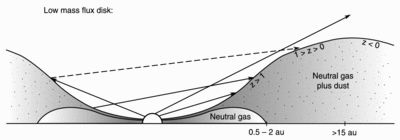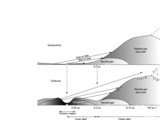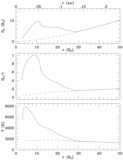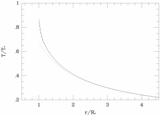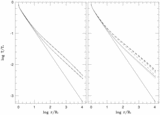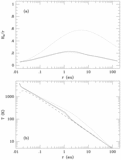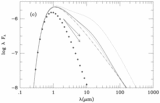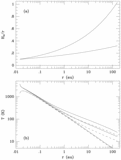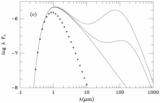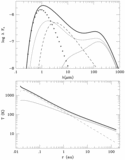Image Details
Caption: Fig. 1.
Schematic of the shape of T Tauri disk photospheres based on vertical structure simulations. At small radii (close to the central star), the disk is too hot for dust to exist at the midplane. Owing to the temperature dependence of the opacity in this region, the disk flares strongly (﹩z> 1﹩, where ﹩H_{d}\propto r^{z}﹩), and the surface is exposed to radiation from the central star as well as from the opposite surface of the luminous disk. Dust condenses to the midplane at a radius that depends upon local heating sources; the range shown of 0.5 to 2 AU is appropriate for a disk with 1 M⊙ central object, mass flux in the range ﹩( 1{\mbox{--}} 100) \times 10^{-9}\,M_{\odot }\,\mathrm{yr}\,^{-1}﹩, and viscous efficiency between 10−2 and 10−4. In regions where dust exists throughout vertical extent of the nebula, the disk increases in thickness so slowly (﹩1> z> 0﹩) that direct stellar radiation is not intercepted. The dashed ray represents the process of "secondary" reprocessing in which the disk receives radiation from disk surfaces at smaller radii that have in turn received radiation from the star or inner hot disk.
Copyright and Terms & Conditions
© 1999. The American Astronomical Society. All rights reserved. Printed in U.S.A.


